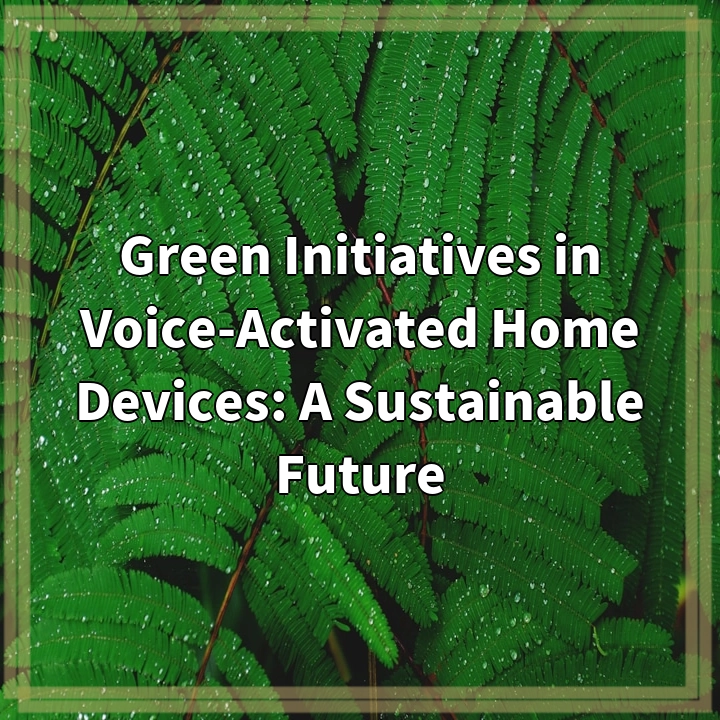
What it is:
Green Initiatives in Voice-Activated Home Devices: A Sustainable Future
With the rapid advancements in technology and the increasing focus on sustainability, voice-activated home devices have emerged as a popular and convenient solution for controlling various aspects of our homes. These devices, such as Amazon Echo or Google Home, use artificial intelligence and voice recognition technology to interact with users and perform tasks.
Green initiatives in voice-activated home devices refer to the integration of sustainable features and practices in these devices to minimize energy consumption, reduce waste, and promote eco-conscious habits. By incorporating eco-friendly functionalities, these devices play a significant role in creating a sustainable future for our homes and the environment.
Real-World Problems:
1. Energy Consumption:
One of the main challenges associated with voice-activated home devices is their energy consumption. While these devices offer convenience and efficiency, they require a constant power supply, contributing to increased electricity usage. This poses a challenge in terms of sustainability, especially in regions where the electricity grid relies heavily on non-renewable sources.
2. Material Waste:
Another concern is the material waste generated by the production and disposal of voice-activated home devices. As technology evolves and new models are released, older devices may become obsolete, leading to electronic waste accumulation. Proper recycling and disposal methods are crucial to mitigate the environmental impact of these devices.
3. Data Privacy and Security:
While not directly related to the environment, data privacy and security are important issues concerning voice-activated home devices. These devices constantly listen and collect data from users, raising concerns about who has access to this information and how it is used. Addressing these issues is essential to ensure user trust and confidence in using these devices.

Solutions:
Green Initiatives in Voice-Activated Home Devices: A Sustainable Future
While there are real-world problems associated with energy consumption, material waste, and data privacy in voice-activated home devices, there are several solutions that can help address these concerns and pave the way for a more sustainable future.
1. Energy Efficiency:
Manufacturers can prioritize energy efficiency in the design and programming of voice-activated home devices. This includes implementing power-saving features, optimizing hardware and software to minimize energy consumption, and promoting energy-conscious habits among users through reminders and recommendations.
2. Sustainable Manufacturing and Disposal:
Companies can adopt sustainable practices throughout the product lifecycle, from using recycled materials in manufacturing to ensuring proper recycling programs for older devices. Increasing the longevity of these devices through software updates and compatibility with future technologies can also help reduce electronic waste.
3. Data Privacy and Security Measures:
To address concerns about data privacy and security, manufacturers must invest in robust encryption and authentication systems. Transparent privacy policies should be in place, giving users control over their data and providing clear information on how it is used and protected.















